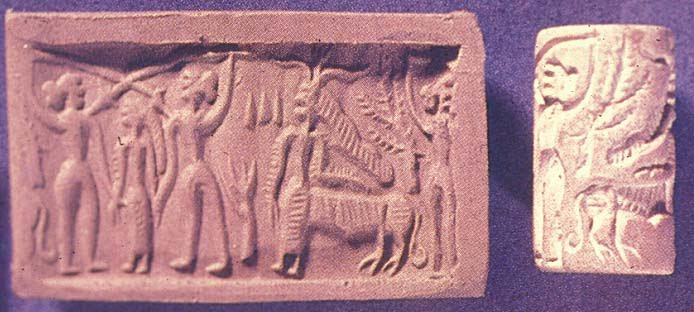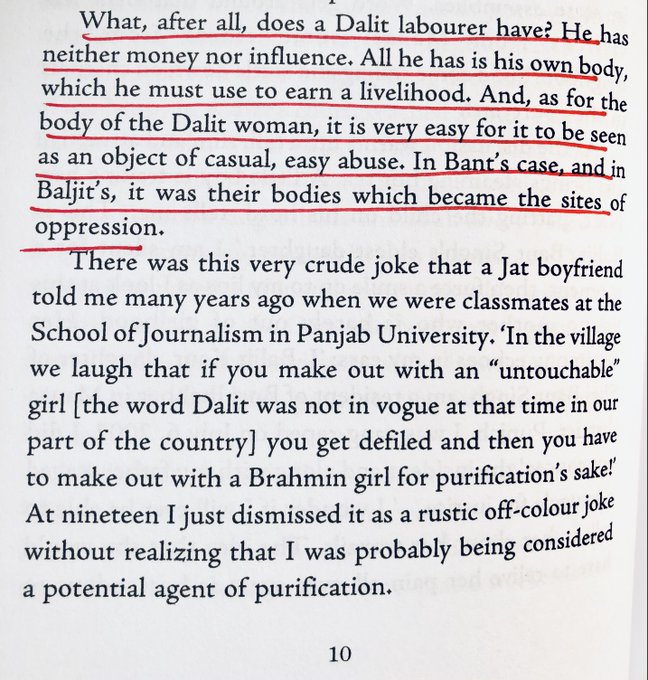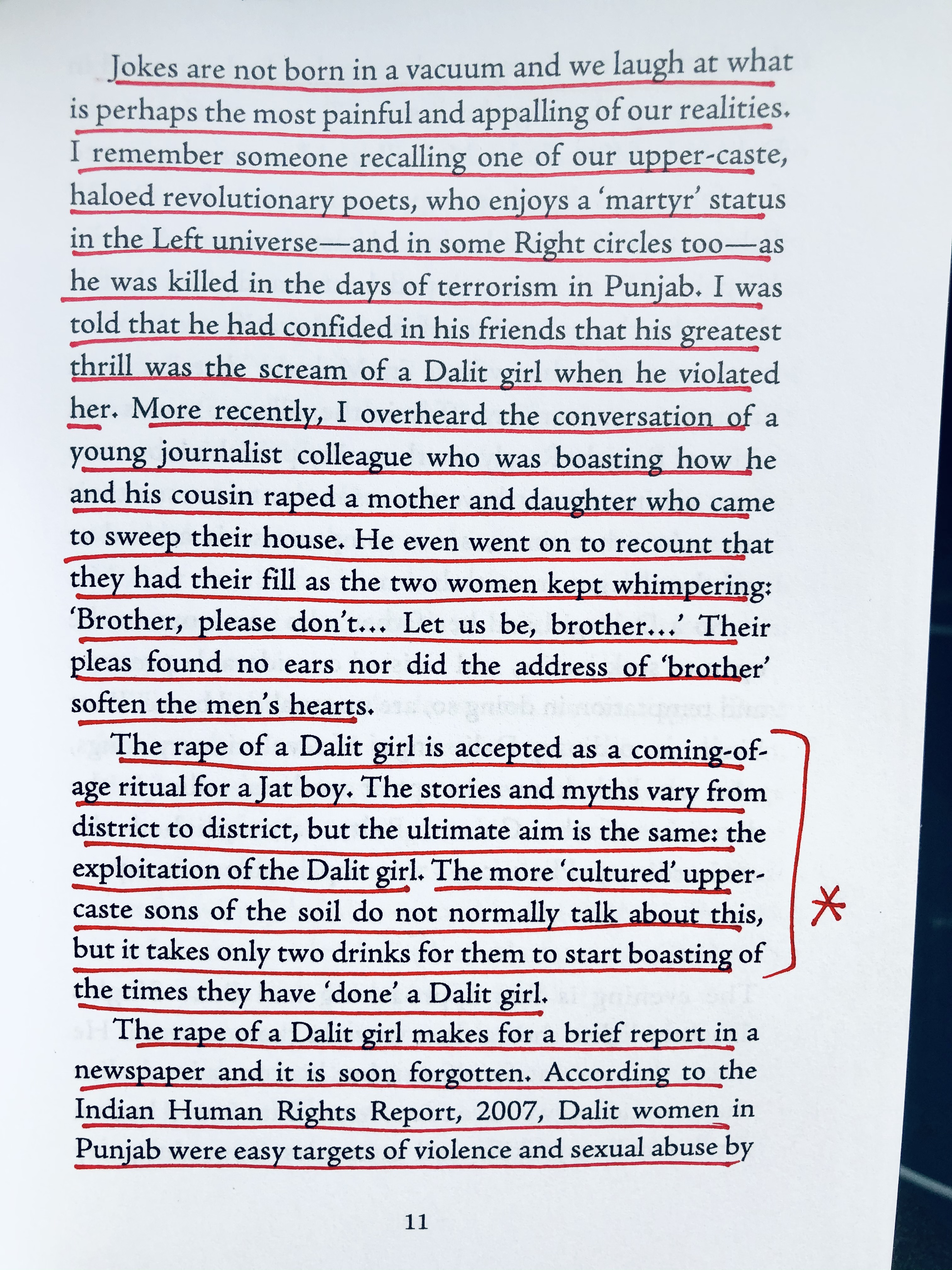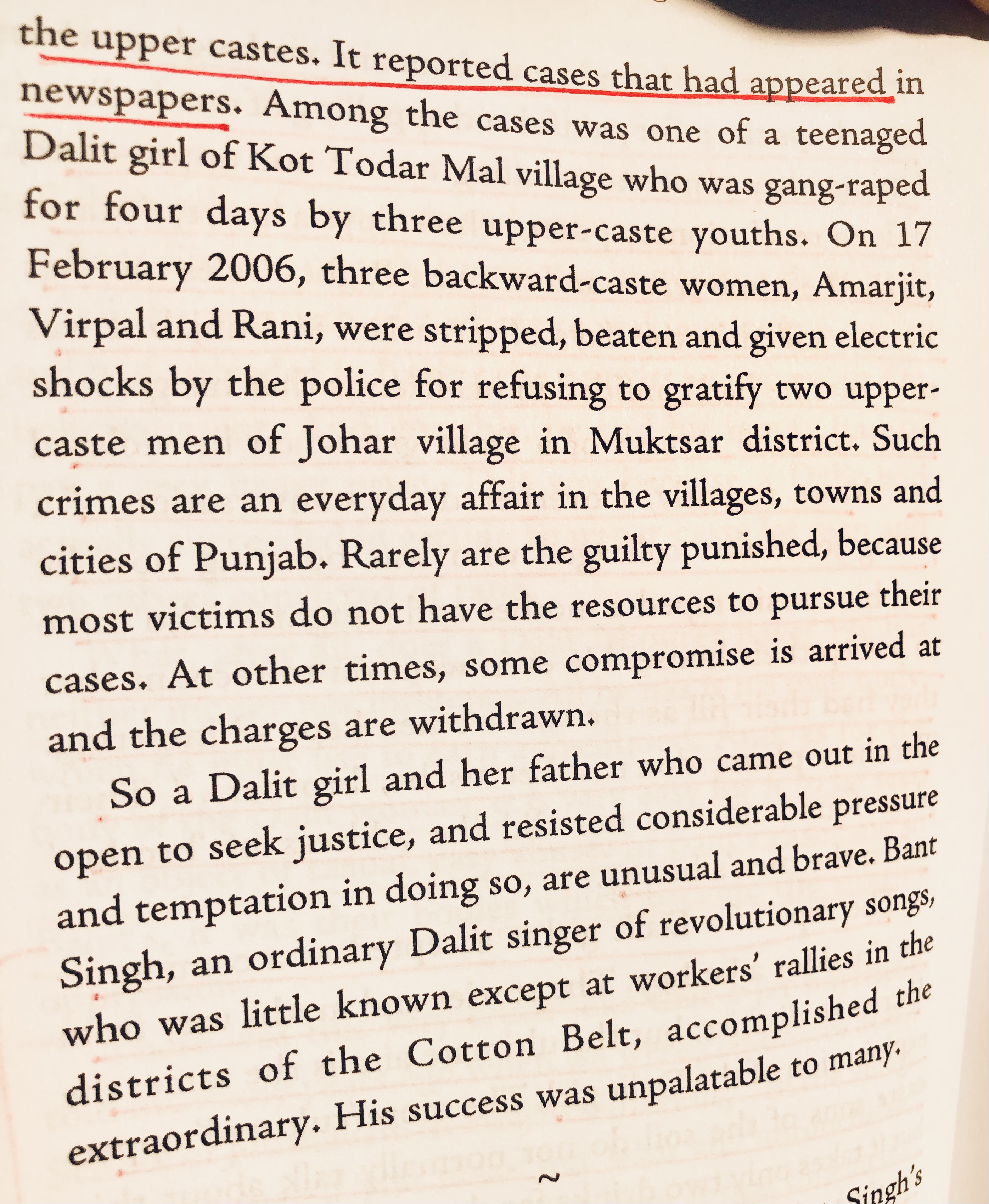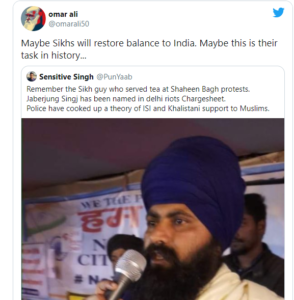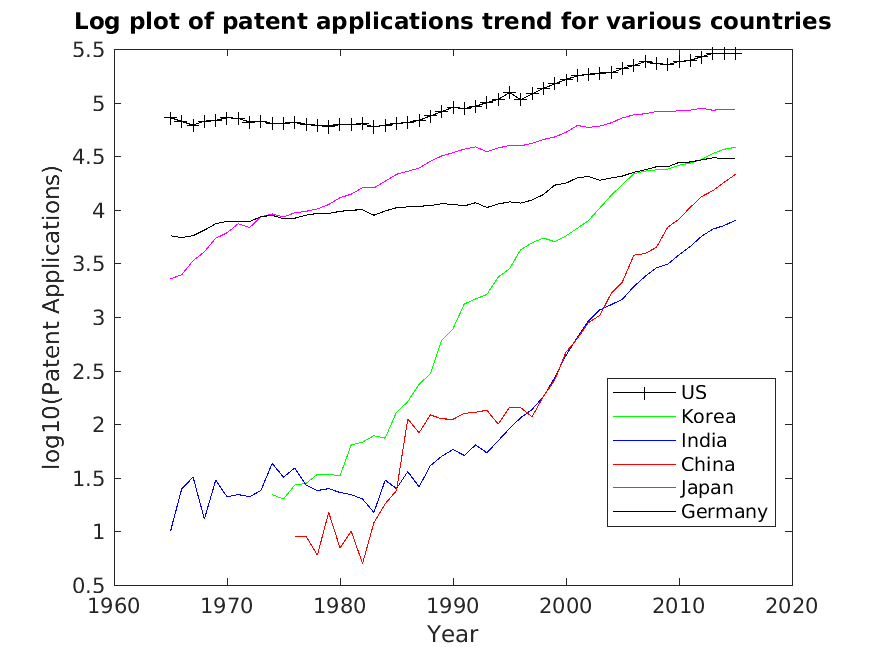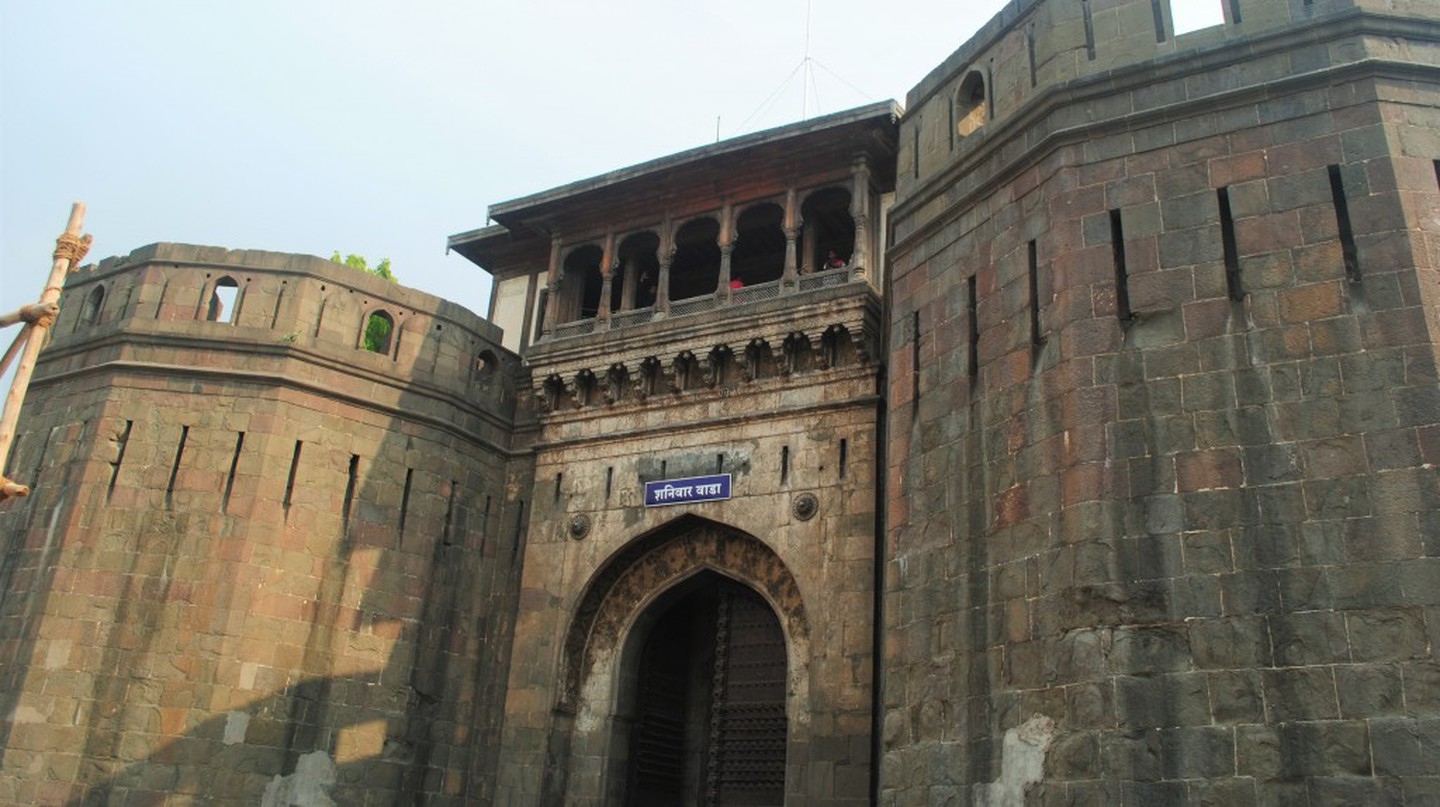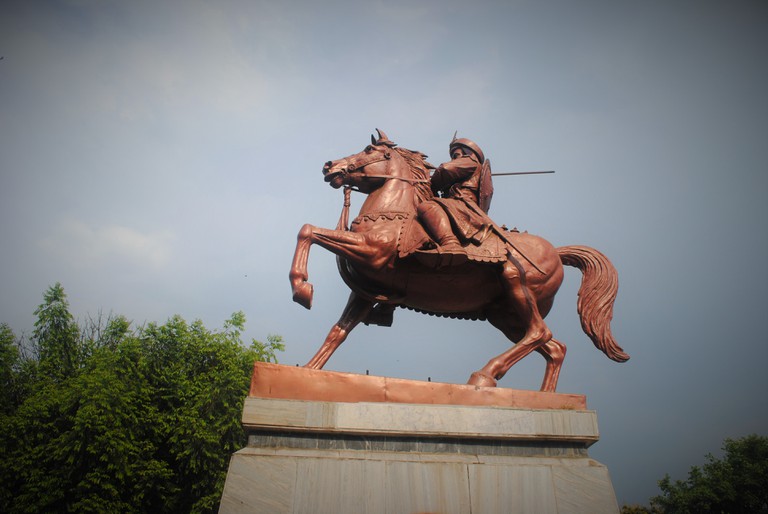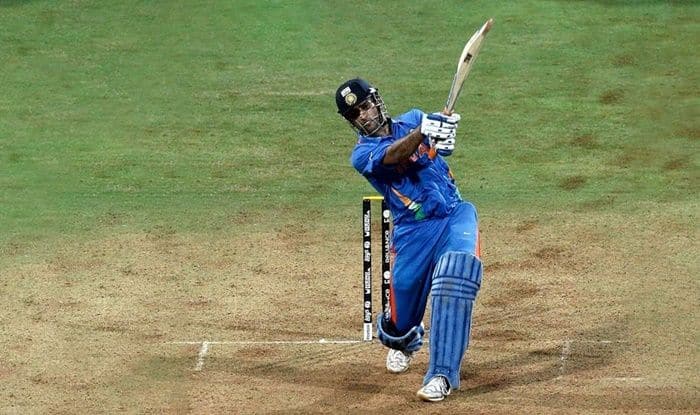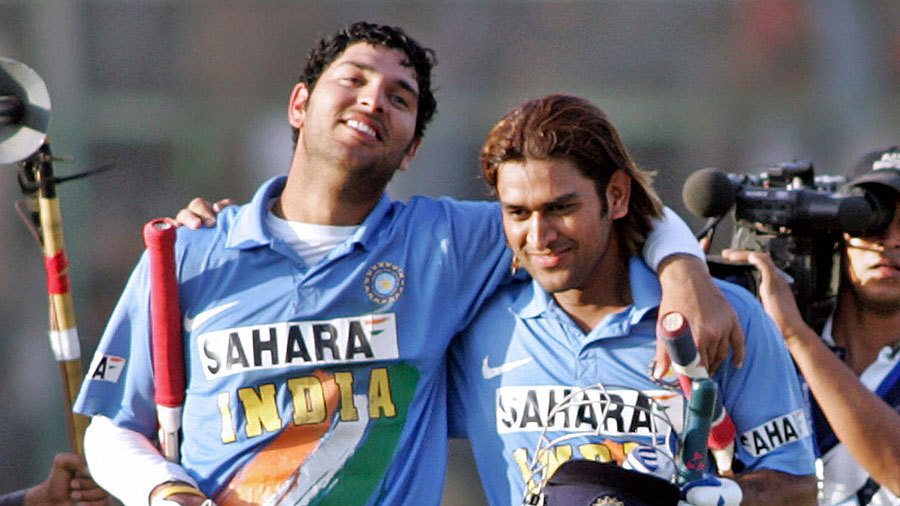In its period of rapid economic growth, Indian democracy was successful in redistributing gains from urban centered, globalization led growth to the rural agrarian economy. The redistribution of available economic and administrative resources among competing groups is a primary concern of democratic politics. The situation is very different in non-democratic polities. In the figure below, we see that during globalization led growth, the ratio of per worker agrarian income to overall per capita GDP drops to less than a half in China and Vietnam, while it remained above or close to one in India and Indonesia. In other words, agrarian workers in one-party China and Vietnam became relatively poorer while their country became richer, agrarian workers in India and Indonesia did not incur a relative disadvantage.
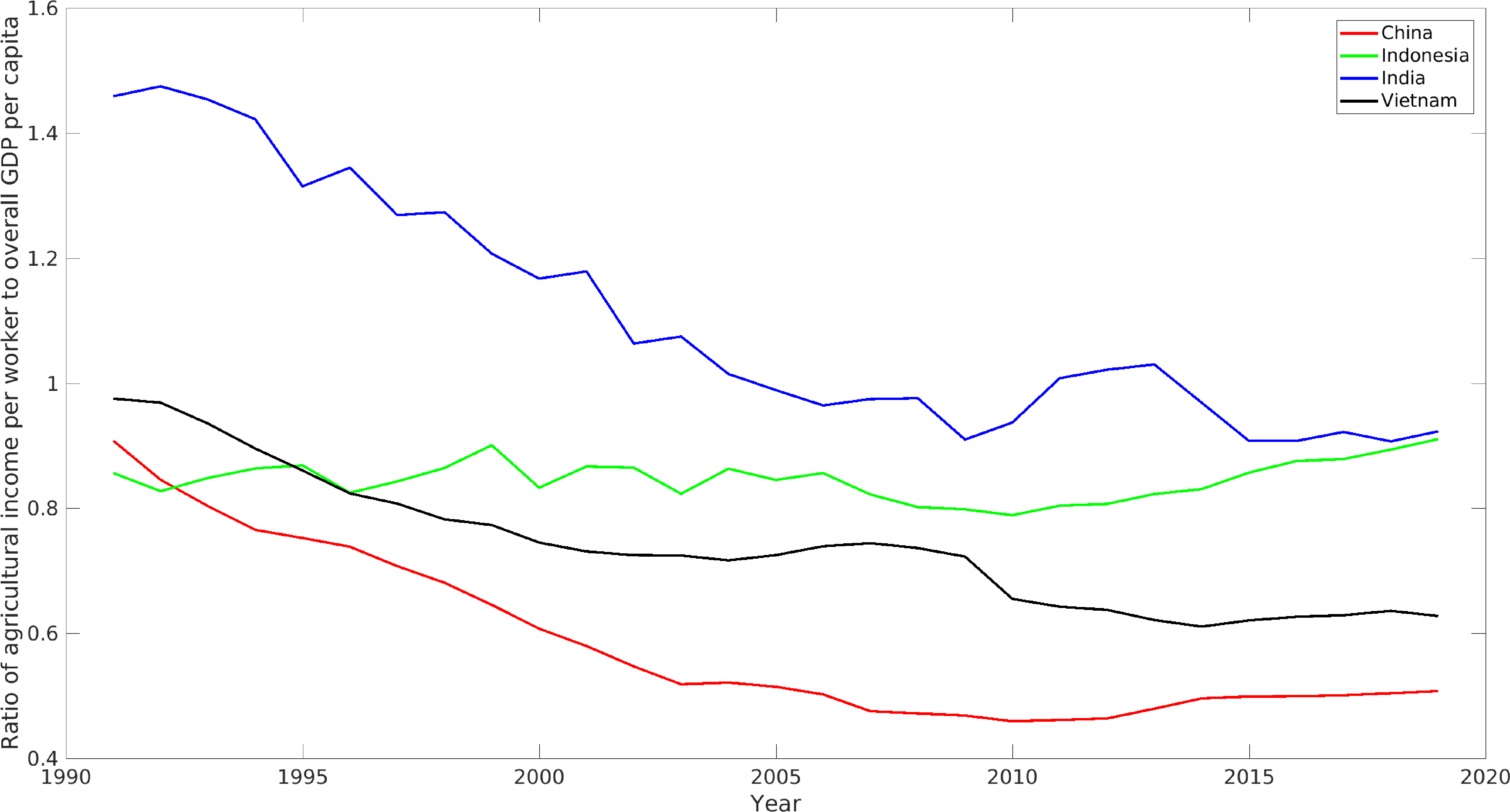
In India the vast rural population with more than a century long experience in political mobilization, has pushed governments to spend money in rural areas. Redistribution has occurred via irrigation projects, rural roads, NREGA, subsidies, loan waivers and recently, direct income transfers. Any negative externality arising from agrarian activity has been borne by urban residents (eg: Delhi smog) but farmers were not penalized. Aside from rural-urban dynamics, democratic redistribution has led to a spatial equalization of agricultural productivity across the country.
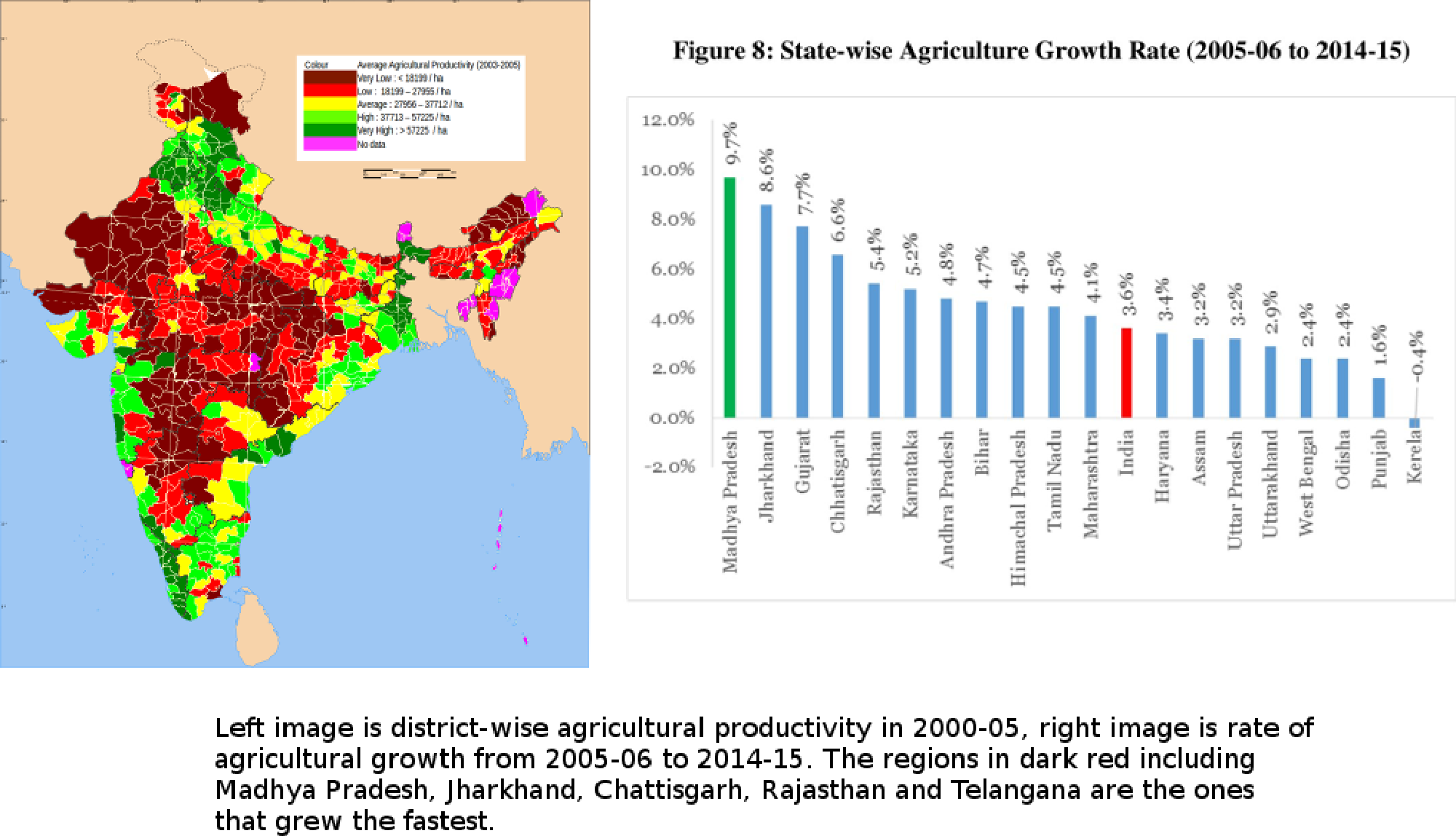
Though the condition of Indian cities is depressing, the upshot of a democracy dominated by the rural majority is comfortable food security. In fact, even though India’s use of pesticide is quite low by global standards, and its agricultural yields, cold-chain infrastructure sub-par, it has become a major net agricultural exporter. This is in huge contrast to China which has become a massive net importer of food. This is an important strategic advantage for India.
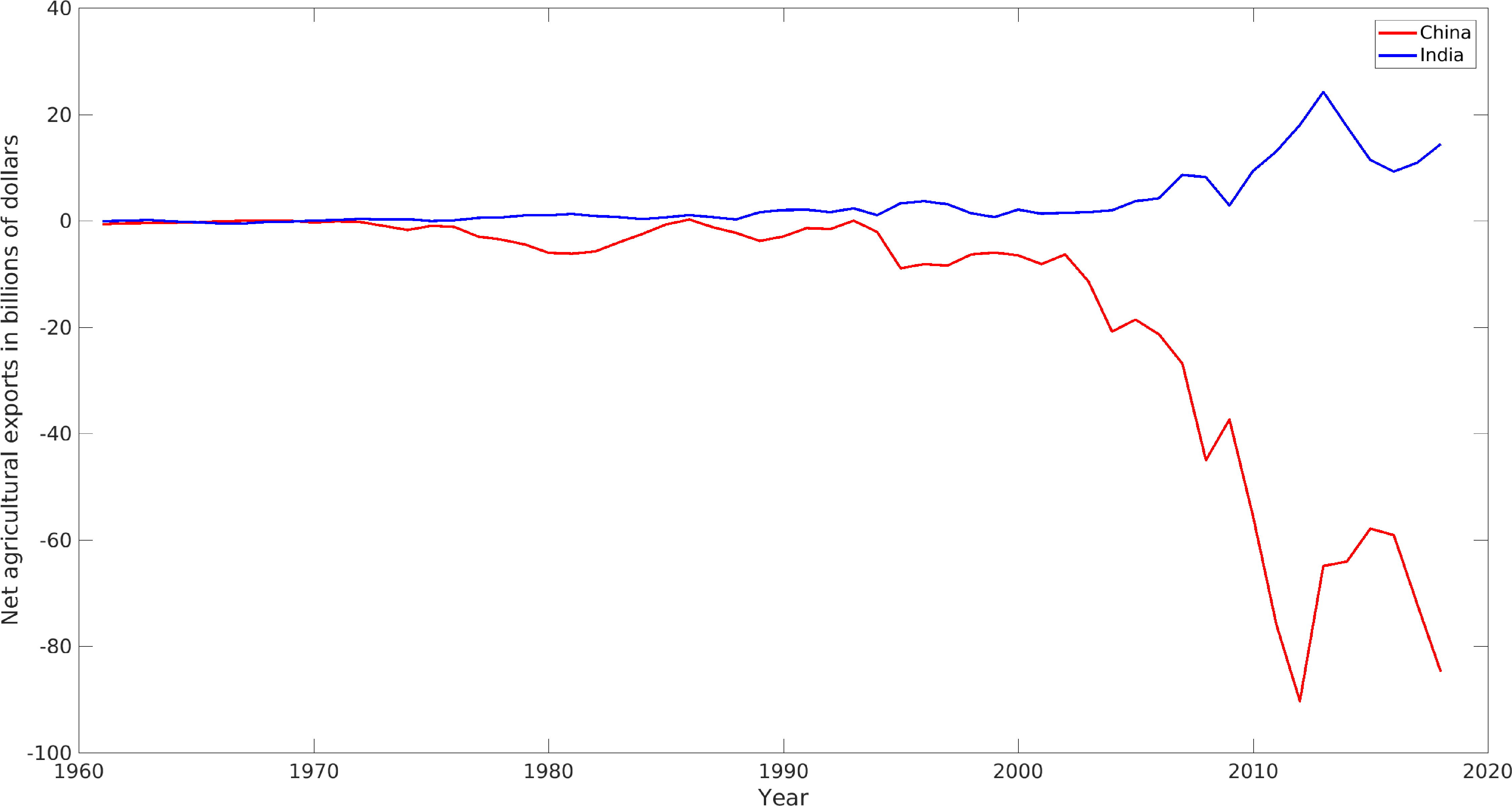
There are signs, though, that India’s redistribution toolkit might be reaching the limits of its efficiency. Concurrently, a more reformist Indian government, awash with surplus grain, wants to re-orient farmers towards higher return crops or even an exit from farming. An urbanising electorate may also not be as willing to redistribute their hard earned tax monies towards their rural co-citizens.
The reorientation of the Punjab-Haryana farmer away from rice and wheat will require tact and persuasion, not ordinance fiat. The set patterns are very comfortable from the economic (MSP + diaspora remittances + armed forces recruitment) and psychological (we feed and secure the nation) perspective. The simple promise of higher incomes might not convince historically agrarian communities who havent fully embraced the money economy.
The Prime Minister has proven to be a masterful communicator. We have not yet seen the same skill in his dealings with the farmers. The approach there has oscillated between genuflection and disregard. The potential is there for the 200000 sq. km tract of well irrigated, fertile land in India’s north west to become the new California Central Valley (47,000 sq km). India can then become the land that greatly increases global access to premium agro-products like fresh, dry fruits and vegetarian protein. The latter (beef-mukt world) will also resonate with many urban supporters of the government and even the farmers themselves.
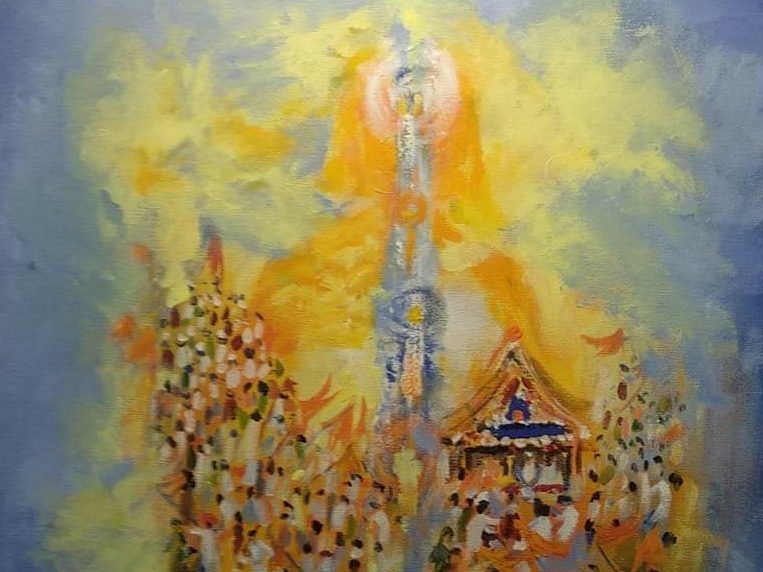
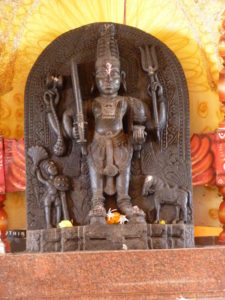
 While Ravalnath is a Kuladevata for most Goans (all castes), Betal is a Gramadevata of some local communities. Vithoba, the popular God of Pandharpur( the annual Waari) is a very important figure of the Bhakti movement. Religious scholar and Sahitya Akademi winner RC Dhere who extensively studied Vithoba also hypotheses pre Vedic origins of Vithoba. Khandoba is another deity whose origins are similarly muddy with a range of theories explaining him as the fusion of earlier deities including Kaal Bhairav. Interestingly in the Puranic tale of Kaal Bhairav “his struggle for the atonement of Brahmanhatya” is central. Khandhoba of Jejuri remains a deity for not only the Sudra castes, but Brahmins, Jains, Lingayats, and even some Muslims including the patronage of comparatively tolerant Bijapur Sultan Ibrahim Adil Shah. While it would be tempting to dismiss this as some tenuous Donigerish take, the sheer numbers of such stories spread across the country strengthen the hypothesis.
While Ravalnath is a Kuladevata for most Goans (all castes), Betal is a Gramadevata of some local communities. Vithoba, the popular God of Pandharpur( the annual Waari) is a very important figure of the Bhakti movement. Religious scholar and Sahitya Akademi winner RC Dhere who extensively studied Vithoba also hypotheses pre Vedic origins of Vithoba. Khandoba is another deity whose origins are similarly muddy with a range of theories explaining him as the fusion of earlier deities including Kaal Bhairav. Interestingly in the Puranic tale of Kaal Bhairav “his struggle for the atonement of Brahmanhatya” is central. Khandhoba of Jejuri remains a deity for not only the Sudra castes, but Brahmins, Jains, Lingayats, and even some Muslims including the patronage of comparatively tolerant Bijapur Sultan Ibrahim Adil Shah. While it would be tempting to dismiss this as some tenuous Donigerish take, the sheer numbers of such stories spread across the country strengthen the hypothesis.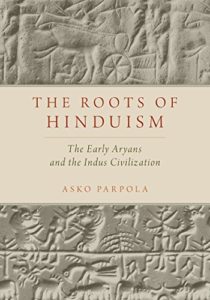 Whether the Pashupati seal from IVC or other Proto-Lingas are Proto-Shiva or not will likely not be resolved till we decipher the IVC script, but these speculations seem very plausible. Even Parpola doesn’t dismiss them in his Roots of Hinduism. In addition, Parpola makes a good argument in the IVC origins of Durga with seals of Tiger riding goddesses from Kalibangan. Similarly, we can say the Dravidian Murukan and the Vedic Skanda gave rise to the Karthikeya we know today. We still don’t have any intelligent speculation about the origins of Ganesha (other than some references to Gajapati), buts it fair to assume the elephant-headed god is a pretty late addition to the Hindu pantheon. The aim here is not to discuss and speculate the origins of these deities but to guess the mechanisms of integration of these deities and customs into Brahmanism. Brahmins had a huge ritualistic/moral capital, but given the tenuous or conflicting relations they had with the Kshatriyas and other dominant castes (as seen through numerous puranic stories especially those of Parshuram) it is fair to assume Brahmins would not often get their way with subtracting traditions they found Adharmic or uncouth, yet they could continue to shape these traditions from inside with participation. Pressure both from the masses and Brahmins would’ve actively shaped the integration of these traditions for centuries to the point where it’s often hazy where Brahmanism ends and where “Non-Brahmanical” traditions begin. (This probably happened with Sramana or Proto-Sramana traditions competing with Brahmanism but that is a different discussion)
Whether the Pashupati seal from IVC or other Proto-Lingas are Proto-Shiva or not will likely not be resolved till we decipher the IVC script, but these speculations seem very plausible. Even Parpola doesn’t dismiss them in his Roots of Hinduism. In addition, Parpola makes a good argument in the IVC origins of Durga with seals of Tiger riding goddesses from Kalibangan. Similarly, we can say the Dravidian Murukan and the Vedic Skanda gave rise to the Karthikeya we know today. We still don’t have any intelligent speculation about the origins of Ganesha (other than some references to Gajapati), buts it fair to assume the elephant-headed god is a pretty late addition to the Hindu pantheon. The aim here is not to discuss and speculate the origins of these deities but to guess the mechanisms of integration of these deities and customs into Brahmanism. Brahmins had a huge ritualistic/moral capital, but given the tenuous or conflicting relations they had with the Kshatriyas and other dominant castes (as seen through numerous puranic stories especially those of Parshuram) it is fair to assume Brahmins would not often get their way with subtracting traditions they found Adharmic or uncouth, yet they could continue to shape these traditions from inside with participation. Pressure both from the masses and Brahmins would’ve actively shaped the integration of these traditions for centuries to the point where it’s often hazy where Brahmanism ends and where “Non-Brahmanical” traditions begin. (This probably happened with Sramana or Proto-Sramana traditions competing with Brahmanism but that is a different discussion)